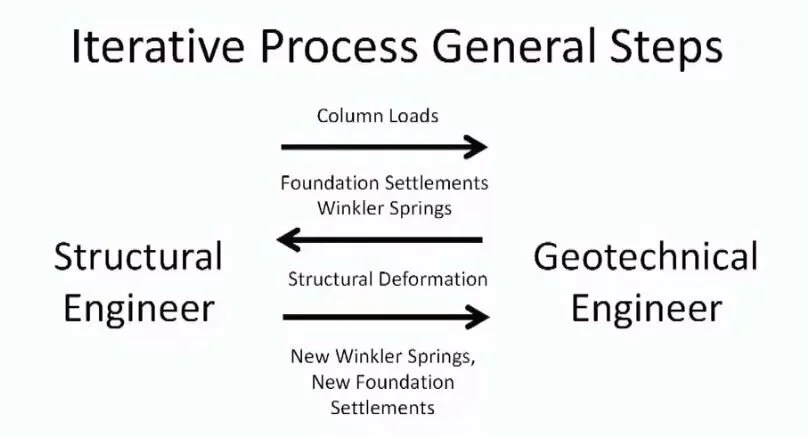Lack of communication between structural engineers and geotechnical engineers can increase the construction cost.
Cooperation between the geotechnical engineers and structural engineers is the key to a project’s success. However, there is always a gap in communication between them.
THE MAIN CAUSES OF POOR COMMUNICATION.
The client always hires the geotechnical consultant, while the architectural consultant always engages the structural consultant. Consequently, the main consultant does not manage the geotechnical engineer.
In some cases, the geotechnical consultant completes their work before the main consultant is assigned to the project.
Usually, the structural consultant fees do not include any allowance for managing the geotechnical consultant.
In most projects, The client allocates a small budget to conduct a geotechnical report. Consequently, this limits the field tests and information needed by the structural engineer.
INFORMATION REQUIRED BY THE GEOTECHNICAL CONSULTANT.
The more information the main consultants provide, the better recommendation you will receive. In general, geotechnical engineer needs :
1- Building location on the site plan.
3- Building section indicates the basement floor height and location.
4- Building height.
5- Columns and wall loads if available.
WHAT DO YOU EXPECT TO RECEIVE FROM THE GEOTECHNICAL CONSULTANT?
The Geotechnical report provides critical and vital information for the contractor and structural engineer. Here are the basic information included in the soil report.
1- Allowable bearing capacity under gravity load and lateral loads.
2- Minimum level of excavation.
3- Recommendation for the type of foundation.
4- Total and difference settlement allowance.
5- Initial subgrade reaction.
6- Recommendation of cement type for underground structure elements.
7- Higher and lower groundwater table level.
8- Seismicity and earthquake site classification.
9- Recommendations for the construction of temporary and permanent cut, fill slopes and slope protection.
10- Recommendations for any shoring, sheet piling and dewatering (if required) for installation of below-grade structures and utilities.
11- Active and at‐rest pressures for design of free‐standing and restraint retaining walls and sheet pilings if needed.
12- Passive earth pressure and coefficients of friction for resisting lateral loads.
13- Appropriate factors of safety for the recommended pressure values should also be discussed.
14- Recommendations for excavation and shoring method.
15- Recommendation for slope protection and retention methods.
THE EFFECTIVE COMMUNICATION PROCESS THAT LEADS TO PROJECT SUCCESS.
There general iterative process steps as follows :
1- Columns and walls load come from the structural engineer considering the building base condition as a fixed base.
2- The geotechnical consultant receives the columns loads and applies them to their own model to determine the building settlements, bearing pressure under the raft, soil spring and soil subgrade reaction then send the information back to the structural consultant.

3- The communication between the geotechnical consultant and the structural consultant goes back and forth until they converge on the columns’ load and settlement value.
Thanks to
https://core-en.com/blogs
Er. SP. ASWINPALANIAPPAN., M.E., (Strut/.,)., (Ph.D.,)
Structural Engineer
No comments:
Post a Comment